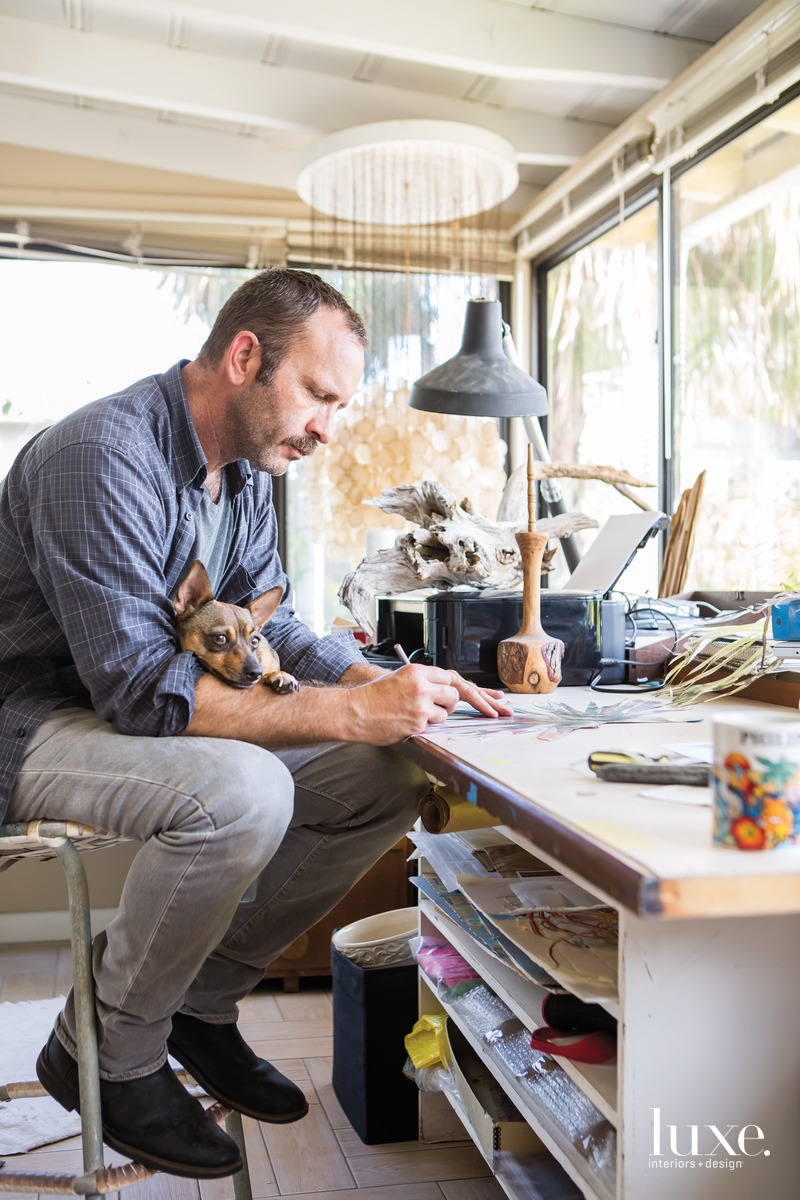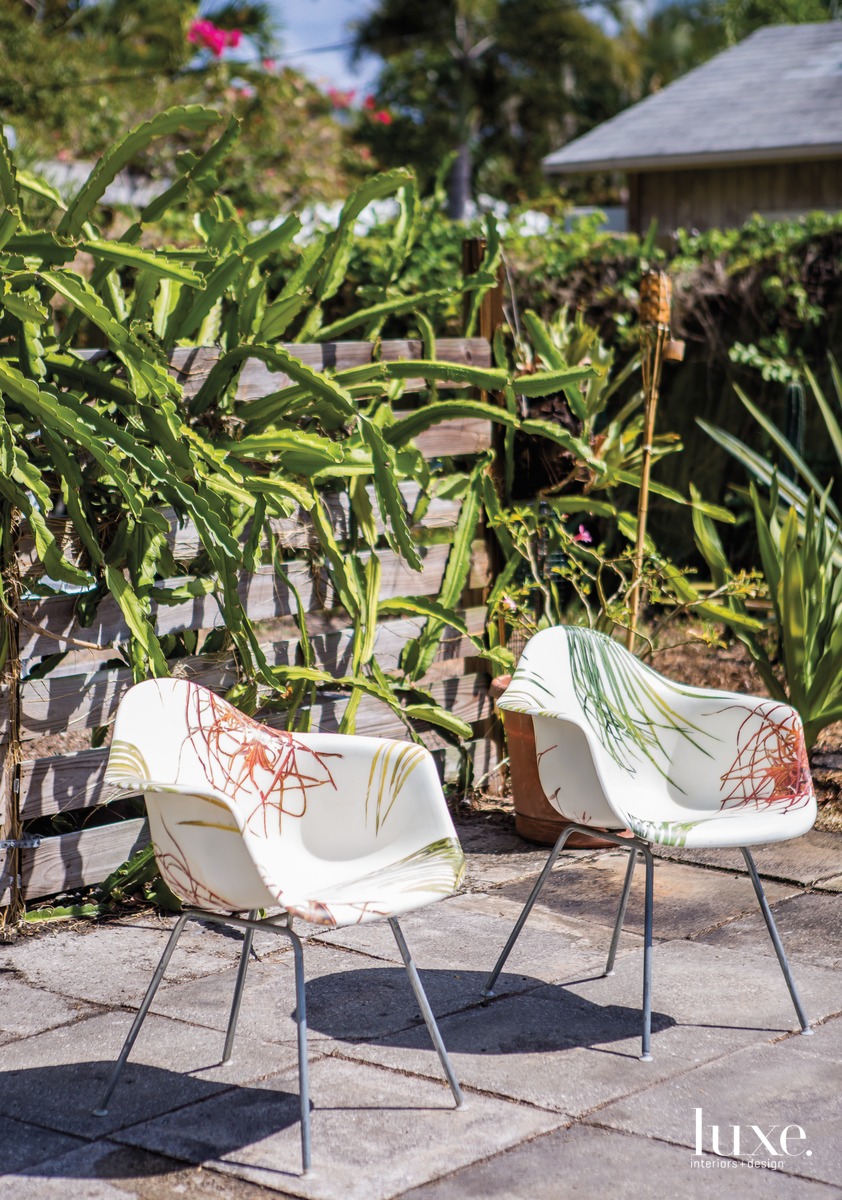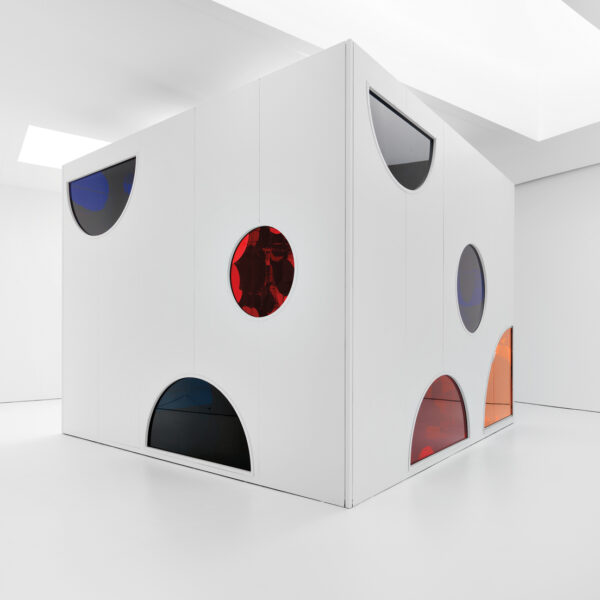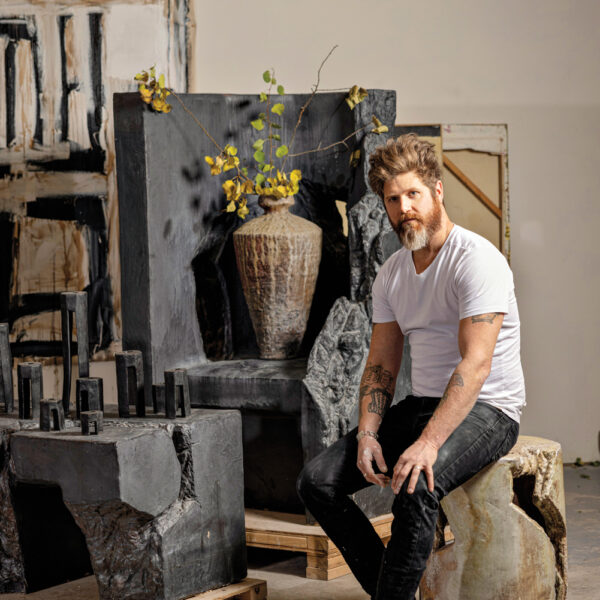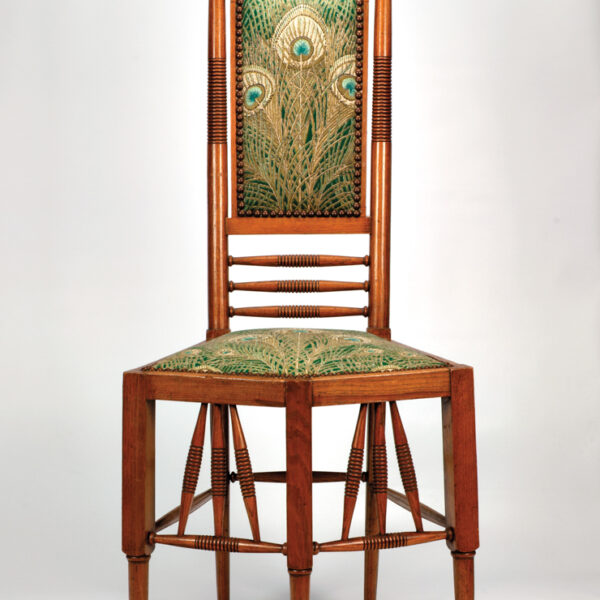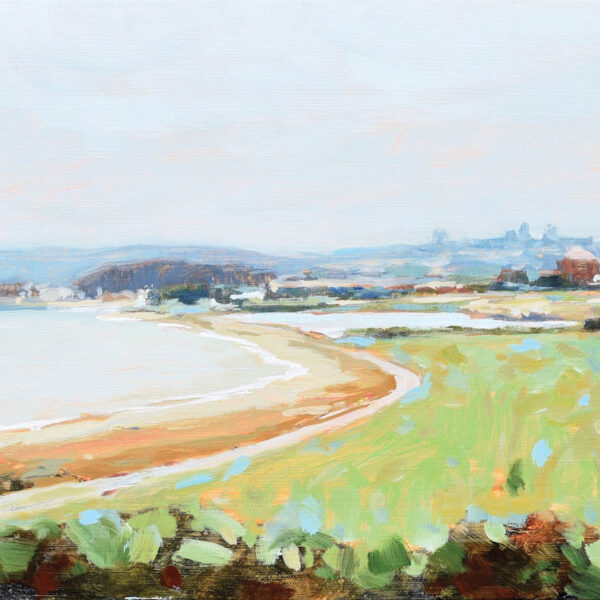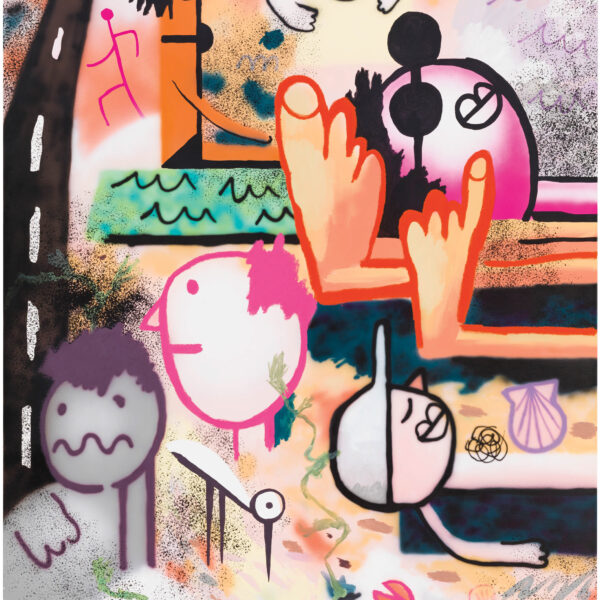Seeing the careful deliberation with which artist and designer Phillip Estlund approaches his decoupage chairs, it’s hard to imagine they were the result of a “happy accident,” as he calls it.
Estlund, who lives and works in West Palm Beach and draws inspiration from the rich and often tempestuous Florida environment, never set out to create furniture. But one day, as he was working on a series of collages that involved sourcing materials from vintage eld guides and botanical books, the idea struck him.
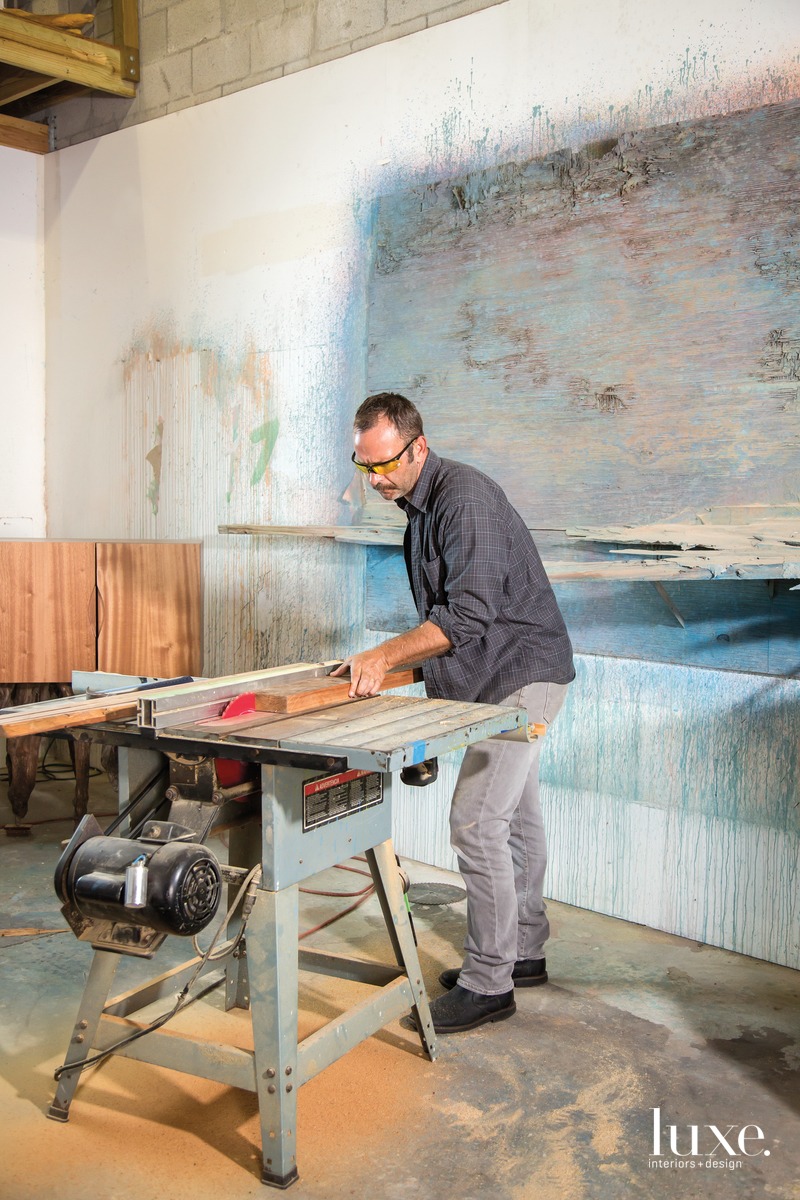
rtist and designer Phillip Estlund works on a furniture piece in his studio warehouse in West Palm Beach.

rtist and designer Phillip Estlund works on a furniture piece in his studio warehouse in West Palm Beach.
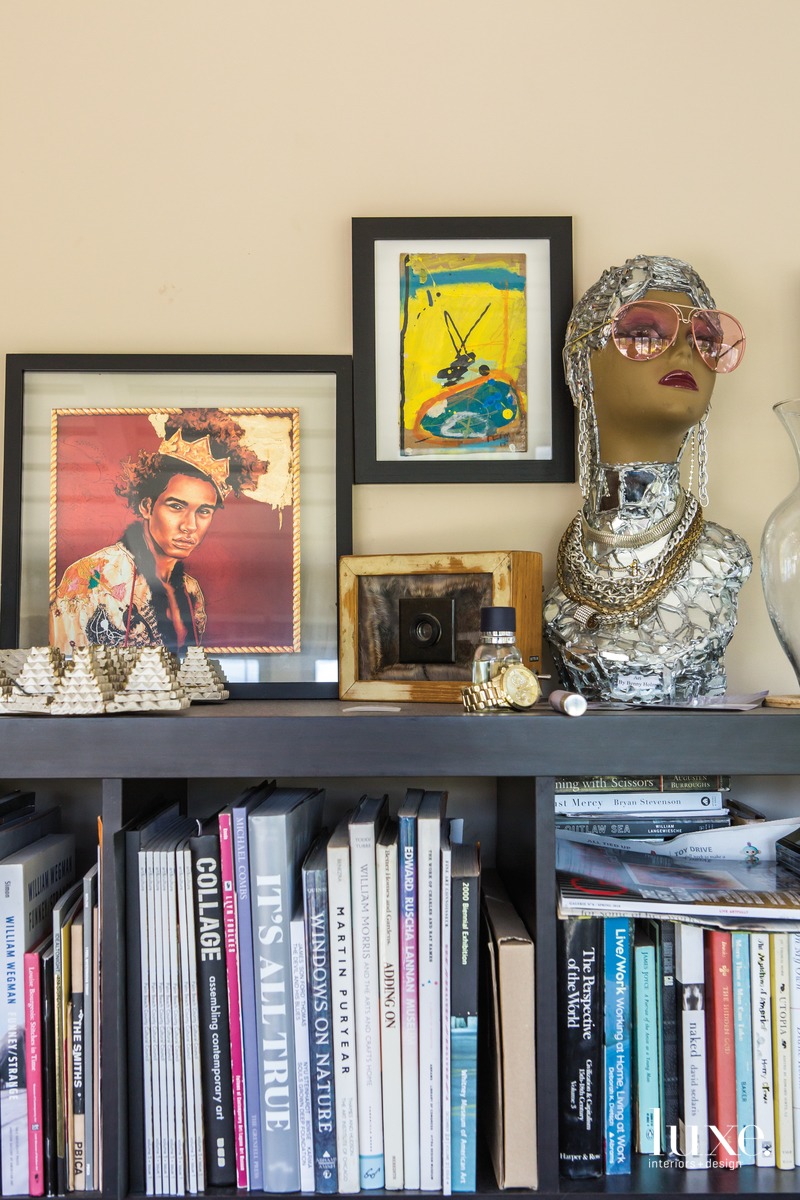
In his home studio and office, also in West Palm Beach, Estlund organizes sentimental trinkets and artwork he's collected over the years.

In his home studio and office, also in West Palm Beach, Estlund organizes sentimental trinkets and artwork he's collected over the years.
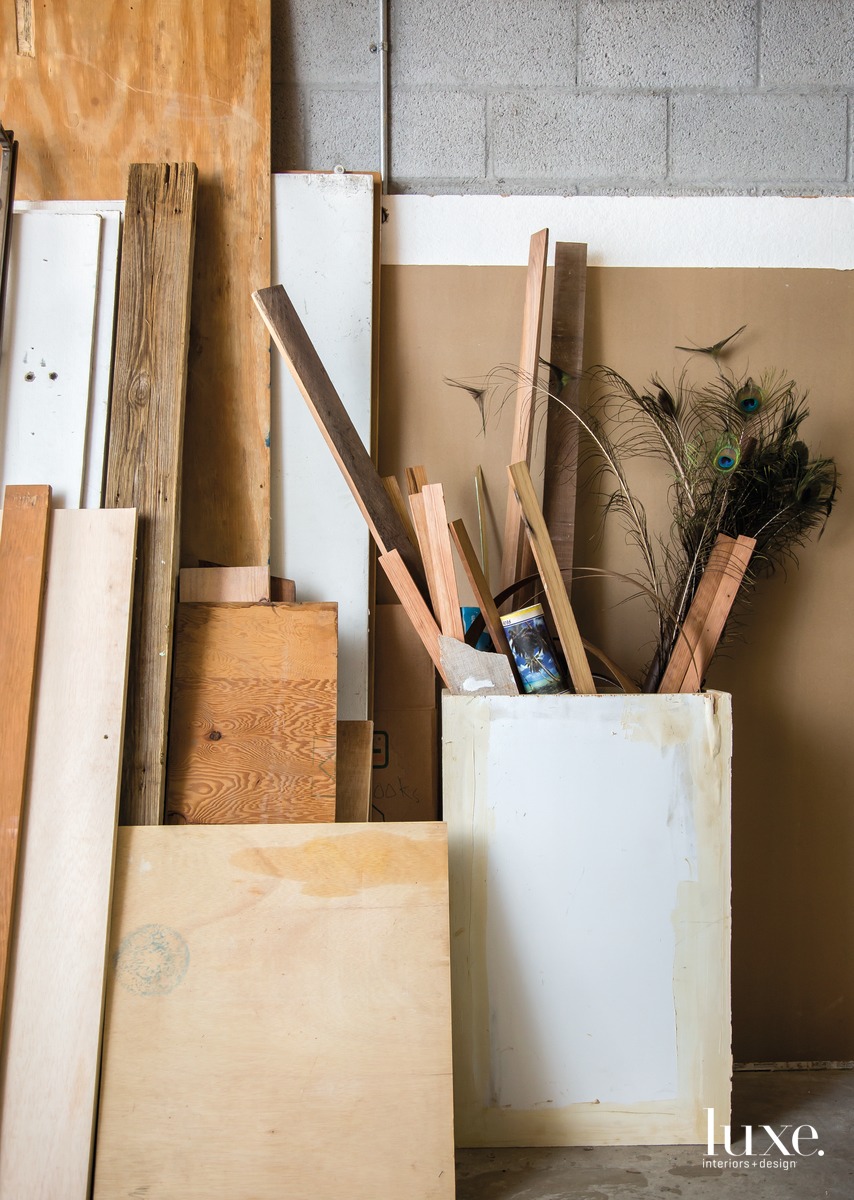
e amasses various plywood and milled Dade County pine used to craft his furniture and sculptures.

e amasses various plywood and milled Dade County pine used to craft his furniture and sculptures.
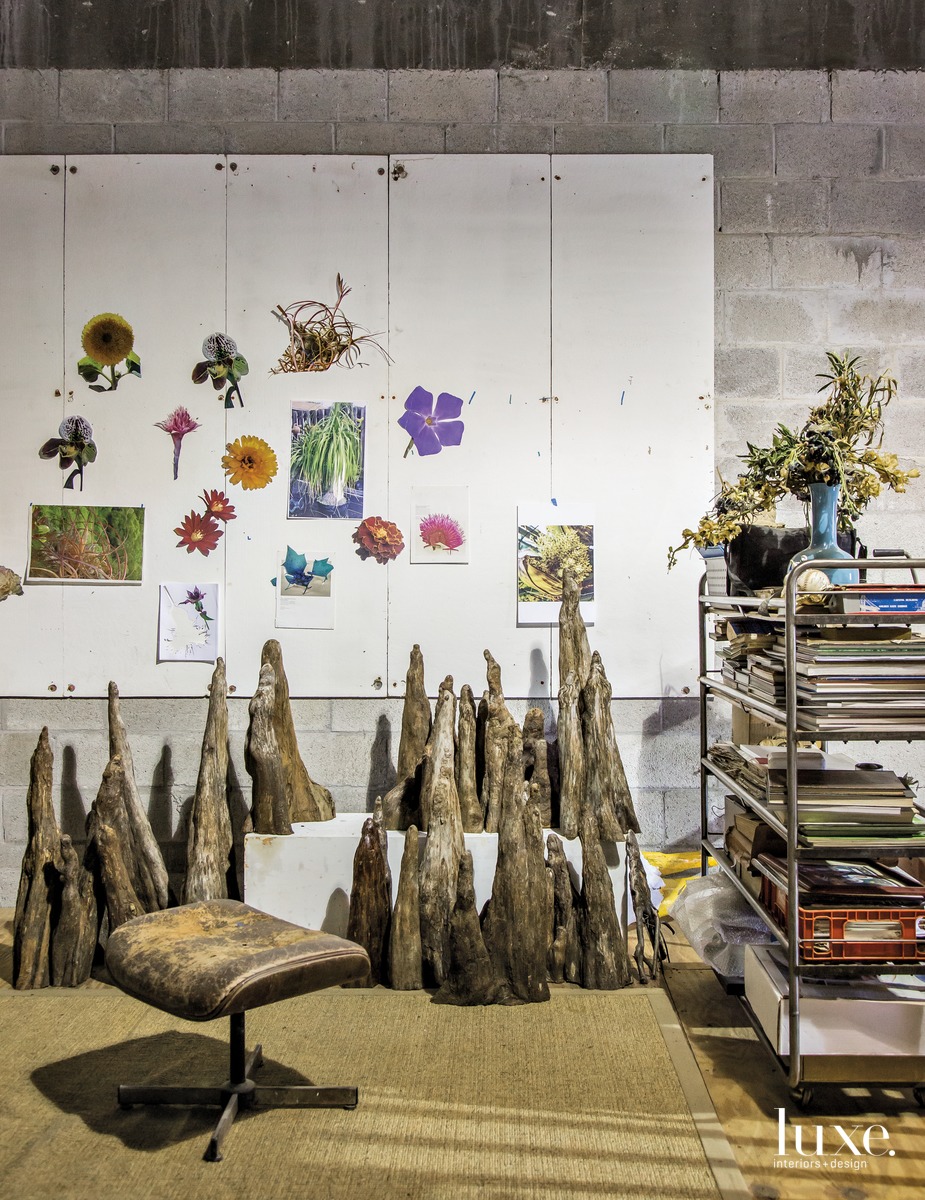
On the mezzanine level of his warehouse, the artist uses a wall to display flowers as a source of material inspiration for his chairs and collages, and to store cypress knees for larger furnishings.

On the mezzanine level of his warehouse, the artist uses a wall to display flowers as a source of material inspiration for his chairs and collages, and to store cypress knees for larger furnishings.

In the comfort of his laid-back studio, and often accompanied by his Chipin (Chihuahua/mini-pinscher), Luna, Estlund begins his process by researching nature guides and botanical prints.

In the comfort of his laid-back studio, and often accompanied by his Chipin (Chihuahua/mini-pinscher), Luna, Estlund begins his process by researching nature guides and botanical prints.
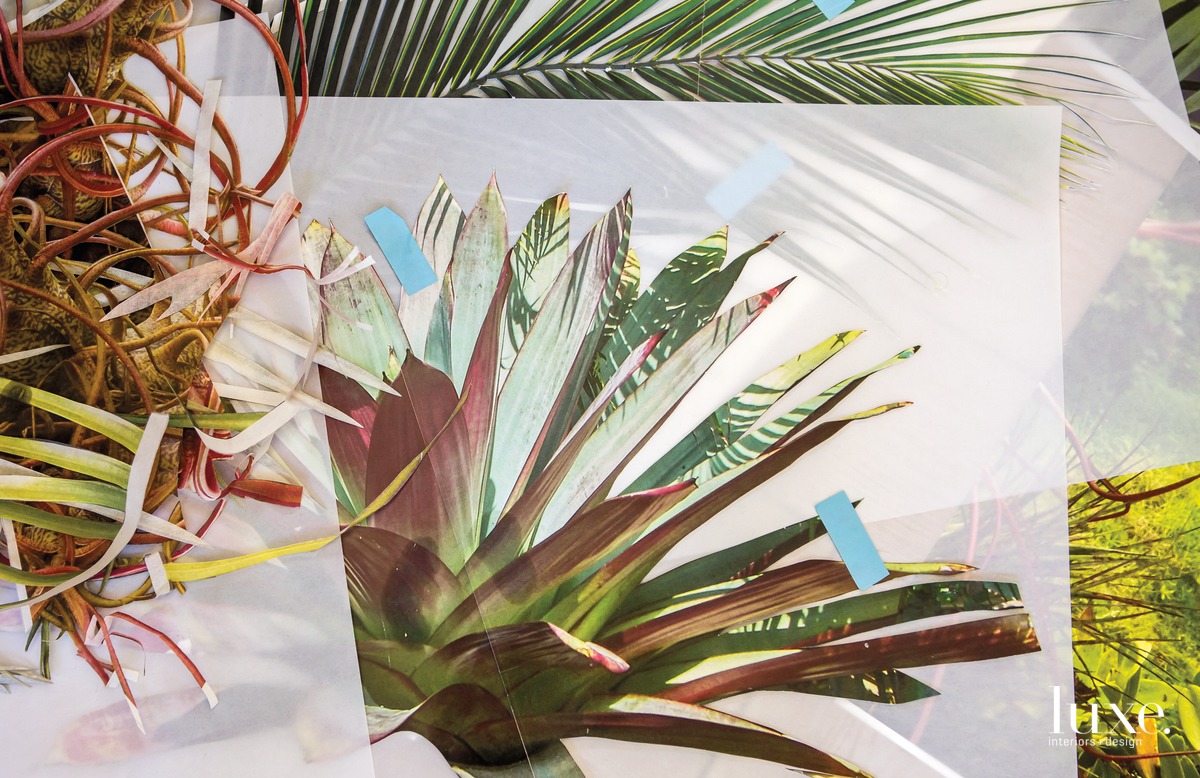
He then hand-cuts images of palm fronds and bromeliads to adhere to his chair surfaces and collages.

He then hand-cuts images of palm fronds and bromeliads to adhere to his chair surfaces and collages.
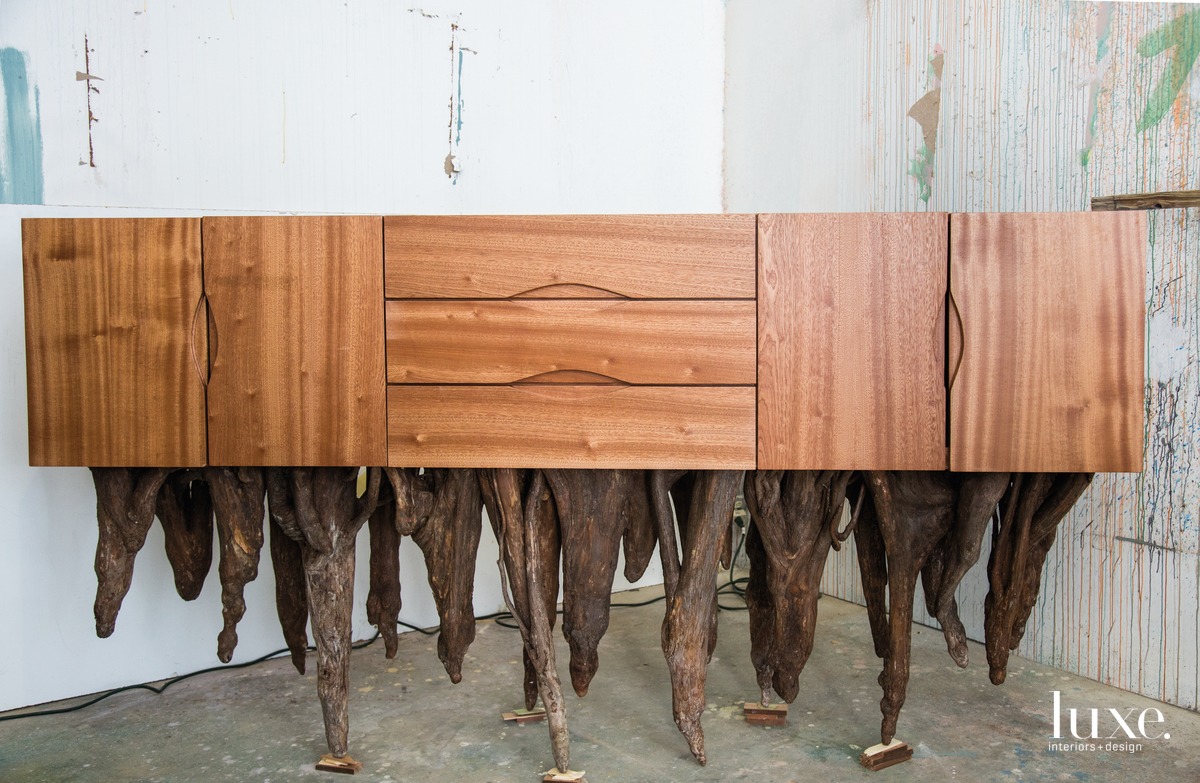
Currently, Estlund is working on a new series of console tables, dressers and credenzas made of sapele mahogany and cypress knees.

Currently, Estlund is working on a new series of console tables, dressers and credenzas made of sapele mahogany and cypress knees.
“I laid out a bunch of images on the Eames shell chair in my studio, and it kind of popped, so I thought I’d make one for myself,” says Estlund, who originally assumed the chair would be a one-off. Later, however, he invited Kyle DeWoody, who had recently started Grey Area, a gallery focused on functional objects by artists, to visit his studio to view another collection when the decoupage chair caught her attention. “The merging of nature and iconic design really resonated with her,” says Estlund, who agreed to make more of the artistically-striking seats. “That’s really how it all began.”
The growing collection, called the Genus Chairs, features curvy Eames chairs covered in a riot of lush decoupage images which, while in keeping with midcentury style, are inspired by natural elements of the Florida landscape, from cactus and coral to mushrooms and minerals. As for the chairs that provide the canvas for his creativity, Estlund always sticks to the real thing.
“Reproductions get close, but there’s an authenticity that’s missing,” he says. “I don’t mind working with imperfect chairs,” says the artist. “I’m down with hairline cracks or variations in color that occur over time, but it’s important to me to source original vintage chairs in order to maintain that hybridization between native elements and iconic midcentury pieces.”
Since his accidental foray into the world of furniture, Estlund has expanded his repertoire. He is now also working on a series of credenzas and side tables standing on legs made of ethically harvested cypress knees, which are native to the north central Florida region where he grew up. “Cypress knees were a kitschy material used in the 1970s for lamps,” he explains. “I’m repurposing that idea and using them for pieces that reference midcentury style.”
These days Estlund, who never imagined himself as a maker of furniture, splits his studio time evenly between designing furniture and working on larger sculptures and paintings. His credenzas and side tables resemble the more tactile physicality of his sculptures and paintings, while his chairs more closely reference the poetry of his earlier collage work. Originally inspired by images from vintage eld guides and old mechanical books, he now relies on the surrounding vegetation as his muse, always keeping his eyes open.
As for the chairs’ esteemed designers, would they endorse Estlund’s creative adaptations? “I’ve had a few people ask me what Charles and Ray Eames would think of my pieces,” he says with a smile. “I treat their work in a way that reveres them as original objects, so I like to think my chairs would get their stamp of approval.”

